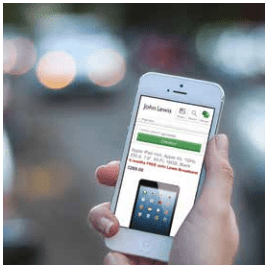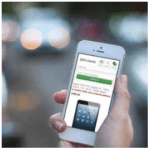Now that shoppers expect to channel-hop at will as they shop around the clock, how can retailers most effectively display products? Mark Felix, online trading director at John Lewis, offers his perspectives to Chloe Rigby
Make no mistake, says Mark Felix, nothing that technology now offers comes close to the experience of seeing products in a store. “No matter how hard we try,” says Felix, online trading director at John Lewis , “we cannot replicate being able to pick up a product, feel the texture, the weight, being clear on the size and whether it’s right for you.” It’s only in the store too that shoppers can most easily ask a member of staff for advice, before buying and taking the item away immediately.
But online offers unparalleled ease and convenience to the time-pressed shopper who finds it easier to look for a product from a smartphone on the commute to work, or from a tablet computer while relaxing on the sofa of an evening. Managing those twin pressures is what modern cross-channel merchandising is all about. Retailers improve the way they explain products both online and in-store, says Felix, by understanding how shoppers buy, and what inspires them to do so.
We’ve come to a real leader in the field for advice, listening to Felix speak at InternetRetailing Conference 2015, before following up with an interview. IRUK 500 research places the department store trader at the top of the Elite group for merchandising. It’s perhaps no coincidence that the retailer has a particularly strong understanding of the way its customers buy.
Data from customer transactions – and especially those of the 1.6m holders of the myjohnlewis loyalty card – tells the retailer that 30% of
its sales are now made online, of which 50% are picked up via click-and-collect services. Of that 50%, 60% are collected from branches of sister supermarket Waitrose . Today, John Lewis sees roughly as much traffic via tablet devices as from desktops, and typical shopping journeys include as many as three different devices.
But understanding shoppers goes deeper than that. Statistics from PPC and organic search, for example, explain how customers arrive at the John Lewis website to look for products, while analytics show how customers move around the site, whether that’s searching, moving through navigation or being inspired to look through online displays or imagery – and what makes them leave. “I think as an industry,” says Felix, “we underestimate the opportunity to really understand how our shoppers shop onsite.”
He draws the analogy of a store in a shopping centre. There, a retailer might focus on conveying its brand, price, value and range through the windows and entrances that face into the shopping centre, only to discover that a significant number of customers are coming in through the neglected car park entrance because it’s more direct. “I sometimes see a total focus on the home page,” says Felix, “and for some retailers 30%, or maybe even 70%, of customers don’t come in through the home page and don’t interact with it. By knowing your products and how shoppers can shop your site, you can make sure you’re focusing in the right areas.”
The data shows that shoppers have very varied approaches to buying, which change with the category. “For a customer buying furniture, what’s really important might be inspirational imagery and understanding how the sofa or chair would fit in,” says Felix. Ensuring furniture dimensions and product details are correct is important, while traders might also potentially set the scene with a ‘get the look’ feature cross-selling accessories.
In John Lewis’ Oxford Street store, for example, Cimagine augmented reality technology shows shoppers from all angles how a 3D computer-generated piece of furniture might look in the home. In the York store, shoppers can touch and feel the John Lewis range of sheets for themselves before using iPads to find more information, view the extended range and, potentially, check out a purchase online. In-store free wi-fi enables shoppers to browse the mobile website or app from their own devices. Apps cater for different buying situations: while the smartphone app has a barcode scanner enabling in-store shoppers to access information and the all-important reviews, the tablet app is about inspiring through use of imagery. ‘Add to wishlist’ functionality across all apps and websites means shoppers can browse on one device before moving to another. But small changes to merchandising can make a real impact too.
“I think there are a lot of gains to be had, a real ability to move the needle by focusing on consistencies,” says Felix. Ensuring product images and product explanations are clear, and setting a daily discipline of readying and optimising a site for the hours ahead drives improvement. “The sad fact is that if your site doesn’t give good imagery or brilliant content, the customer will leave and buy it in a shop or, most likely, go to another site where they do have good imagery and buy it there,” says Felix.
Understanding how shoppers buy can shape the customer experience further, both online and offline. Retailers that see the extended range is frequently scanned in one part of the store might open up more space for the range, while technical questions about a product might prompt retailers to place more staff or a service desk at that point.
Not all retailers have the merchandising resources of a John Lewis. We asked Felix for his top priorities for those with shallower pockets. His answer was simple: “Understand the end-to-end customer journey, and work piece by piece. Have an experimental mindset, learn quickly – and be prepared to fail.”






